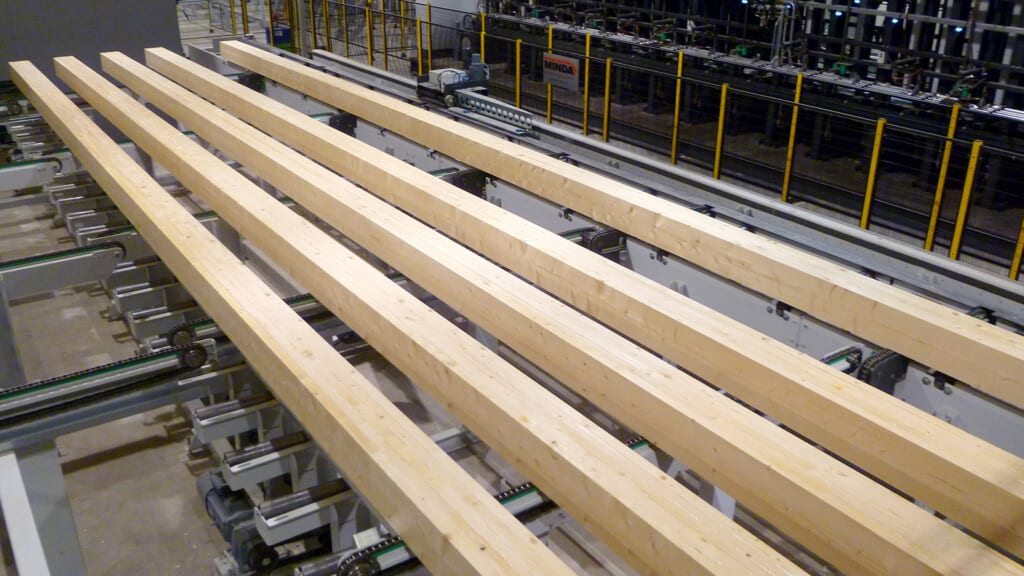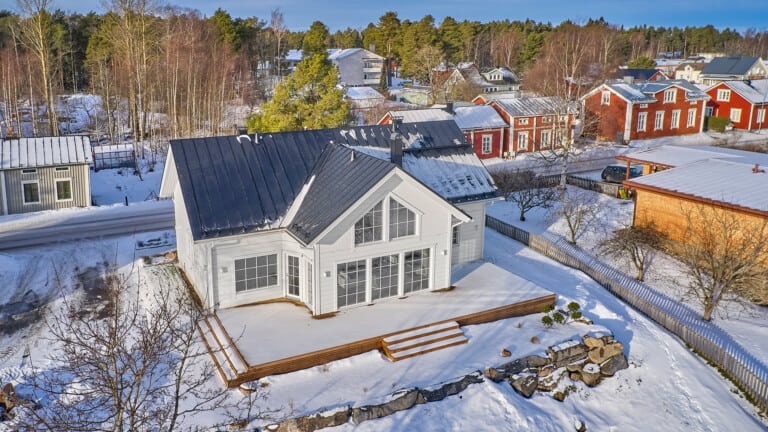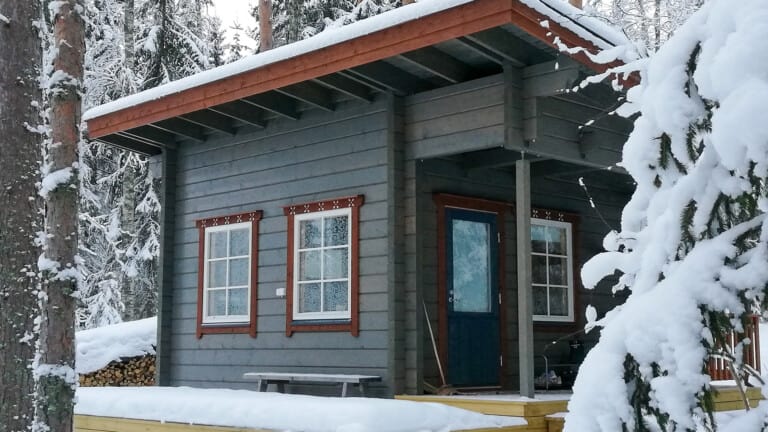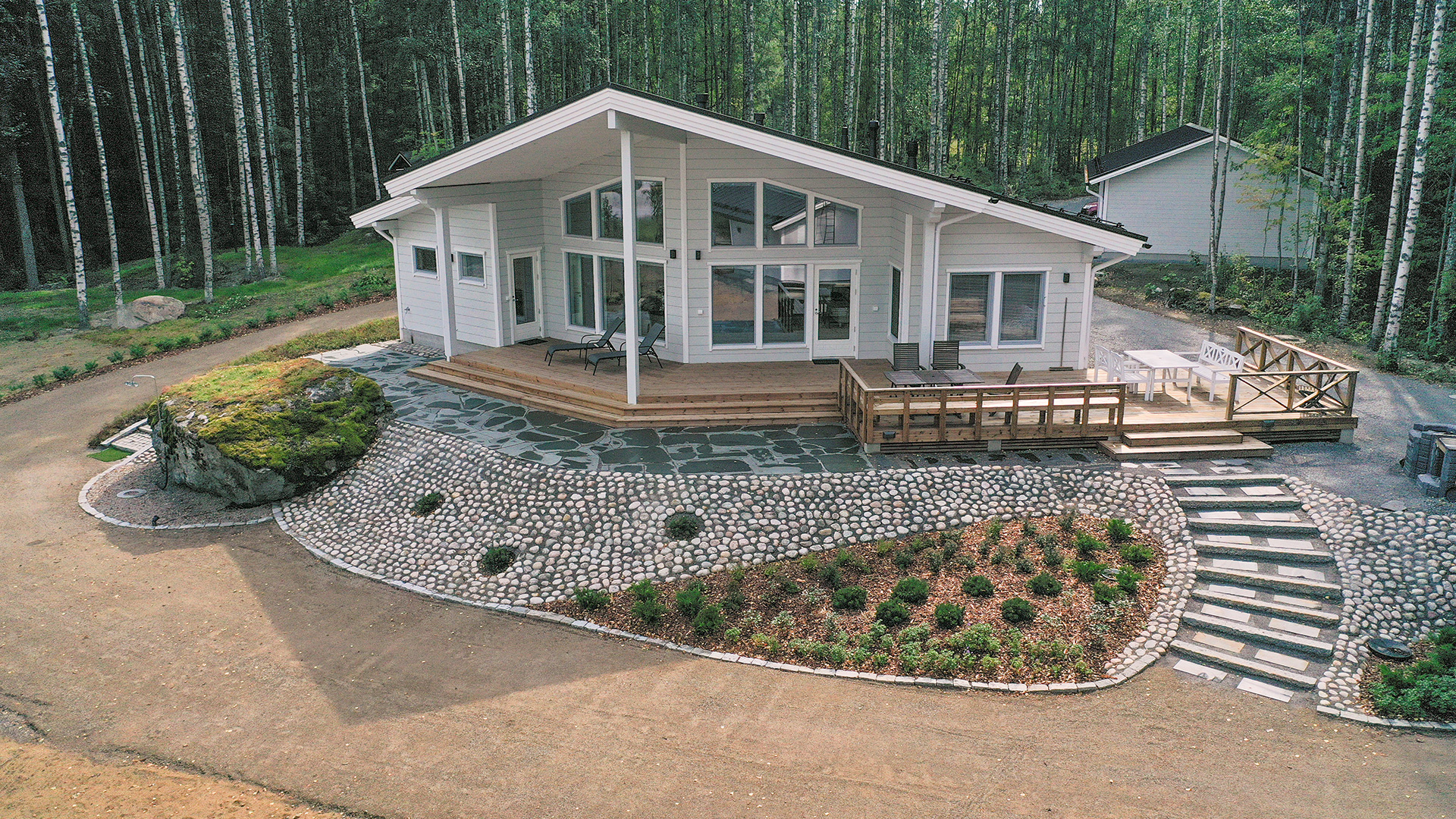The glue used to make the high-quality laminated Kuusamo Log Houses logs for construction does not contain any solvents or prevent the wood from breathing.
The laminated logs are made at the neighbouring Pölkky Oy production facility. Pölkky Oy is the largest private wood processing business in Northern Finland, and it has been making laminated or glued logs for a few decades now.
– Our advantage is our technological skill and experience, as we have been processing wood since the 1970s. Our long history has also been a benefit on the export market, says Pölkky Oy Development Manager Arto Airisniemi.
The massive logs that were used earlier when building log houses have been replaced almost completely by laminated logs. Laminated logs are made of carefully selected timber, and the logs do not bend or crack much due to the carefully refined manufacturing process.
– Wood is a living thing, and massive logs include all the defects, cracks, branches, and rot that are part of the trees. Such defects are reduced when making laminated logs, which makes them much more even in quality than massive logs. Moisture management is also easier with laminated logs, so they do have many good properties as compared to massive logs, Airisniemi summarises.
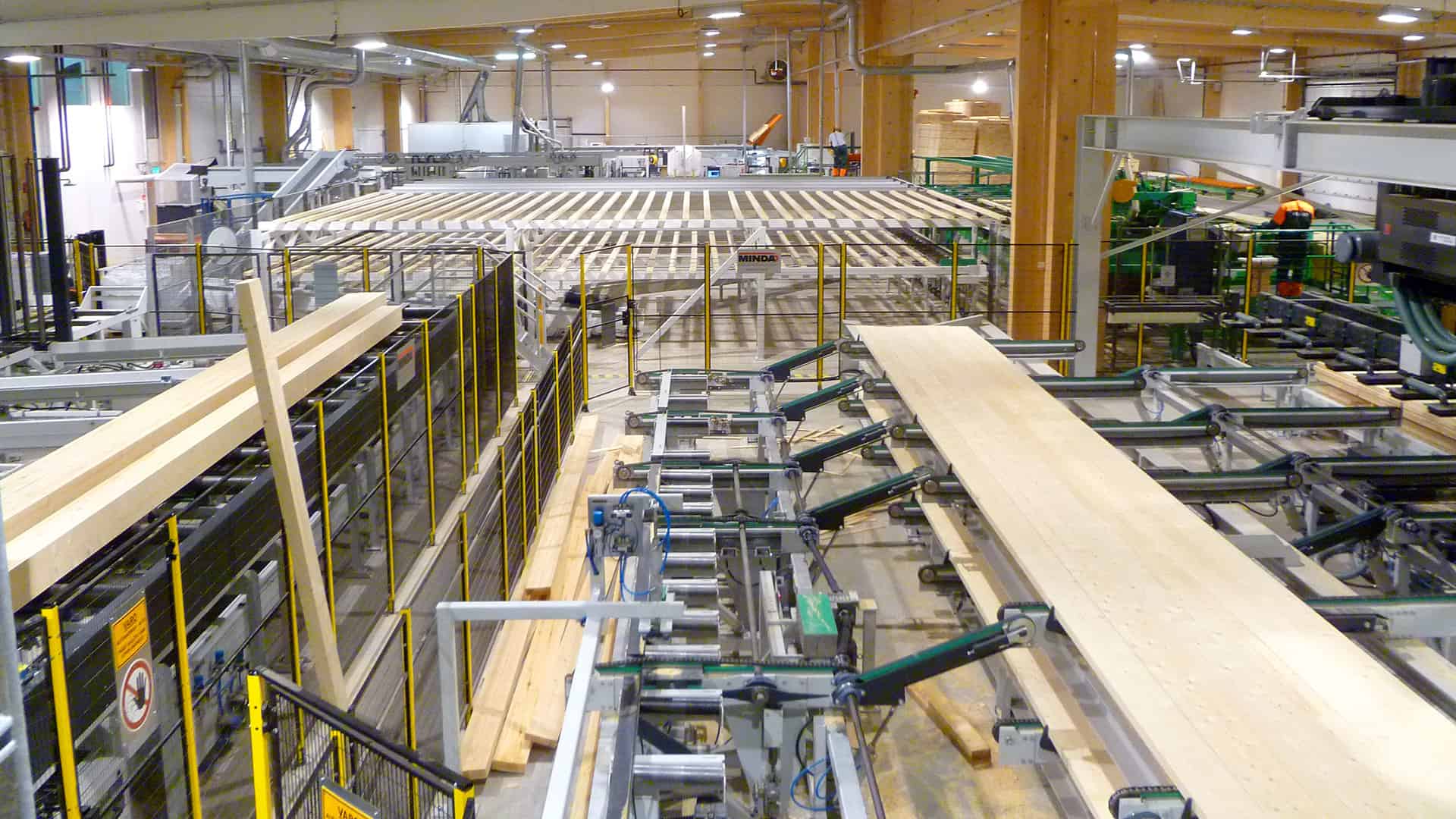
Log glue supports wood’s good characteristics
The good characteristics and effects of log construction and wood on for instance healthy indoor air apply with both laminated and massive logs. The amount of glue applied to a laminated log is very little in proportion to how much wood there is, and as such it does not have a significant impact of the properties of the wood.
– Wood always works as a good insulating material and moisture balancer. According to studies, gluing laminated logs does not weaken the properties of wood, and the glues we use penetrate the moisture in the wood in different ways, Airisniemi explains.
When making laminated logs, Pölkky uses glues that retain the natural breathing properties of wood and do not emit harmful substances into indoor air. The single-component polyurethane glues used by Pölkky do not include any solvents.
– These carefully tested laminated log glues do not emit any harmful substances into indoor air, Airisniemi emphasises.
The safety of the products is also testified to by the fact that components similar to polyurethane glue are also used for furniture cushions and sports shoes.
Read more about our laminated glue options!
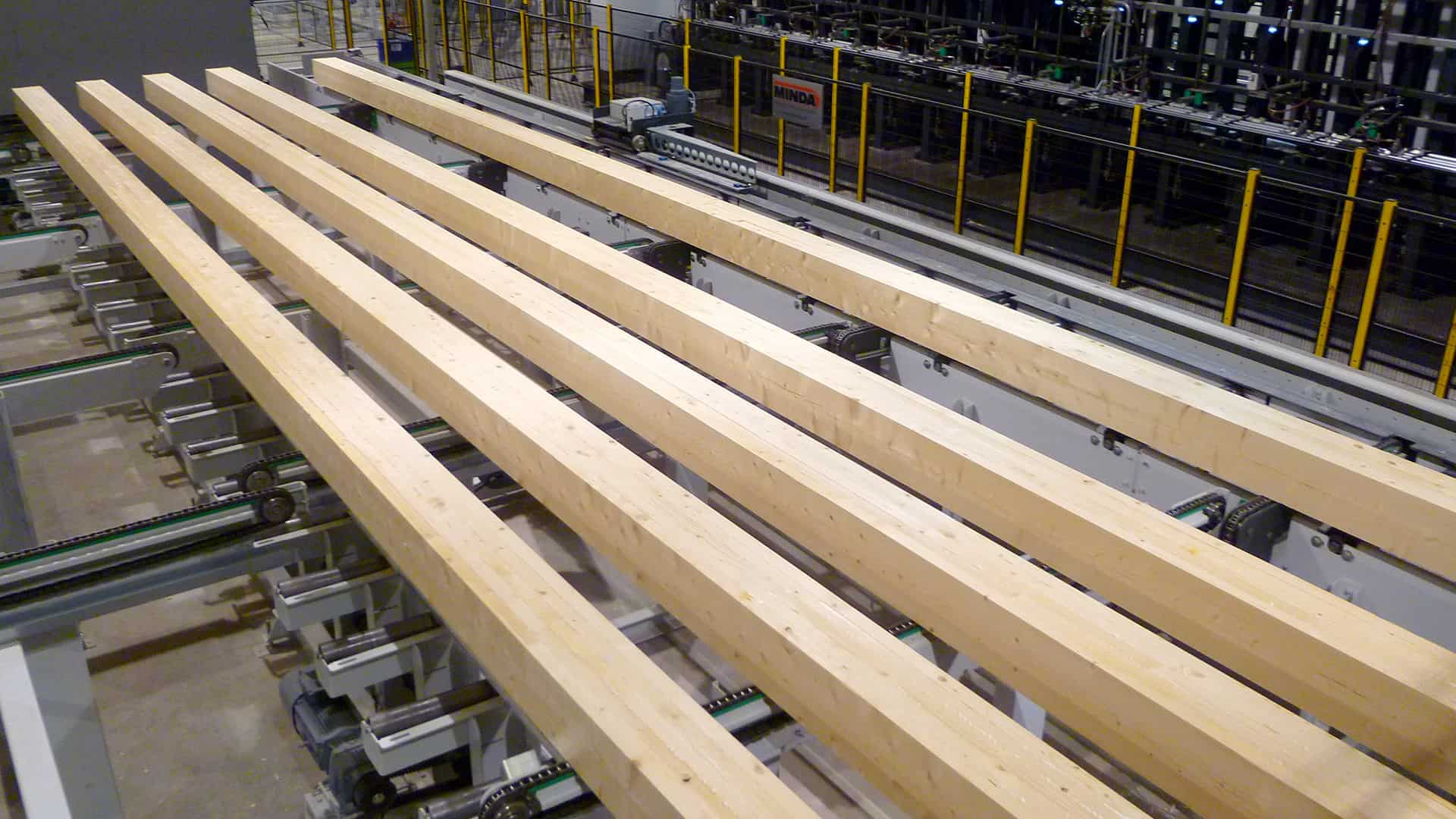
Verified health for indoor air
The making of laminated logs and other wood glue products is controlled by EU standards. Pölkky also carries out in-house quality controls for each glue batch by means of delamination tests. Based on visual observations, the delamination test ensures that the glued layers of laminated glues are durable and strong under long-term thermal and moisture stress.
– A delamination test sample is collected from each batch. In a delamination test, a glued piece of wood is exposed to under and over pressure in a pressure vessel filled with water. It is then placed in a weather cabinet, where it is stressed under conditions that correspond to 40 years of atmospheric conditions, Airisniemi describes.
The delamination test takes about a full day overall, and once it is done, the sample is placed under a looking glass the strength and behaviour of the glued layers are checked. The testing is controlled by VTT Technical Research Centre of Finland.
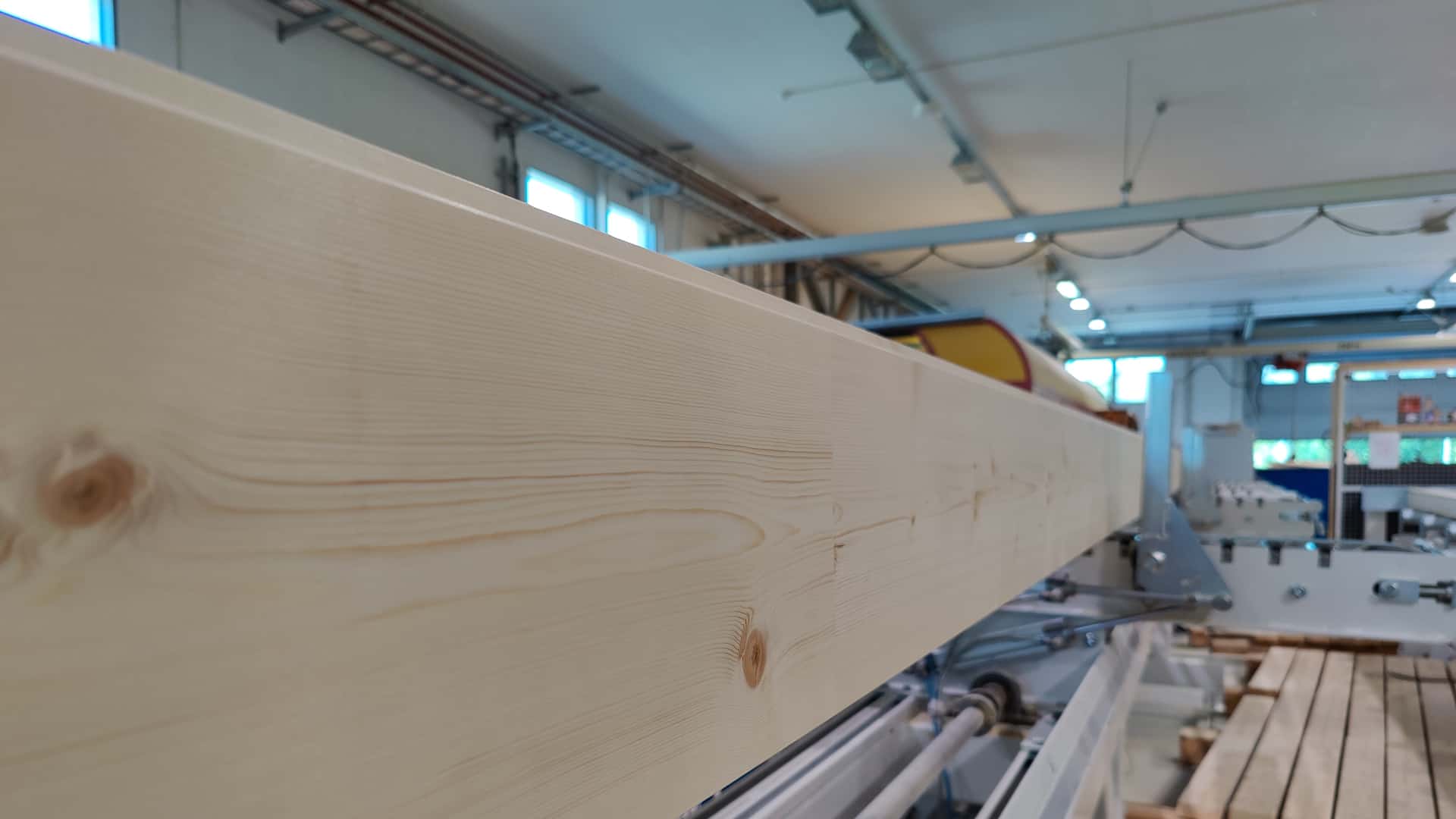
Pölkky does not use high-frequency presses where the gluing process is accelerated by heating up the wood with electricity. The glue used by Pölkky reacts with air such that the log needs to be pressed within ten minutes of applying the glue. The log is compressed for 20 minutes, after which it is planed, profiled, and finally delivered.
– We have chosen a glue that requires ten minutes of time in the open and 20 minutes under compression. So, even here we consider our carbon footprint instead of using electricity to expedite the gluing process, Airisniemi concludes.
Learn more about the ecological aspects of log!

